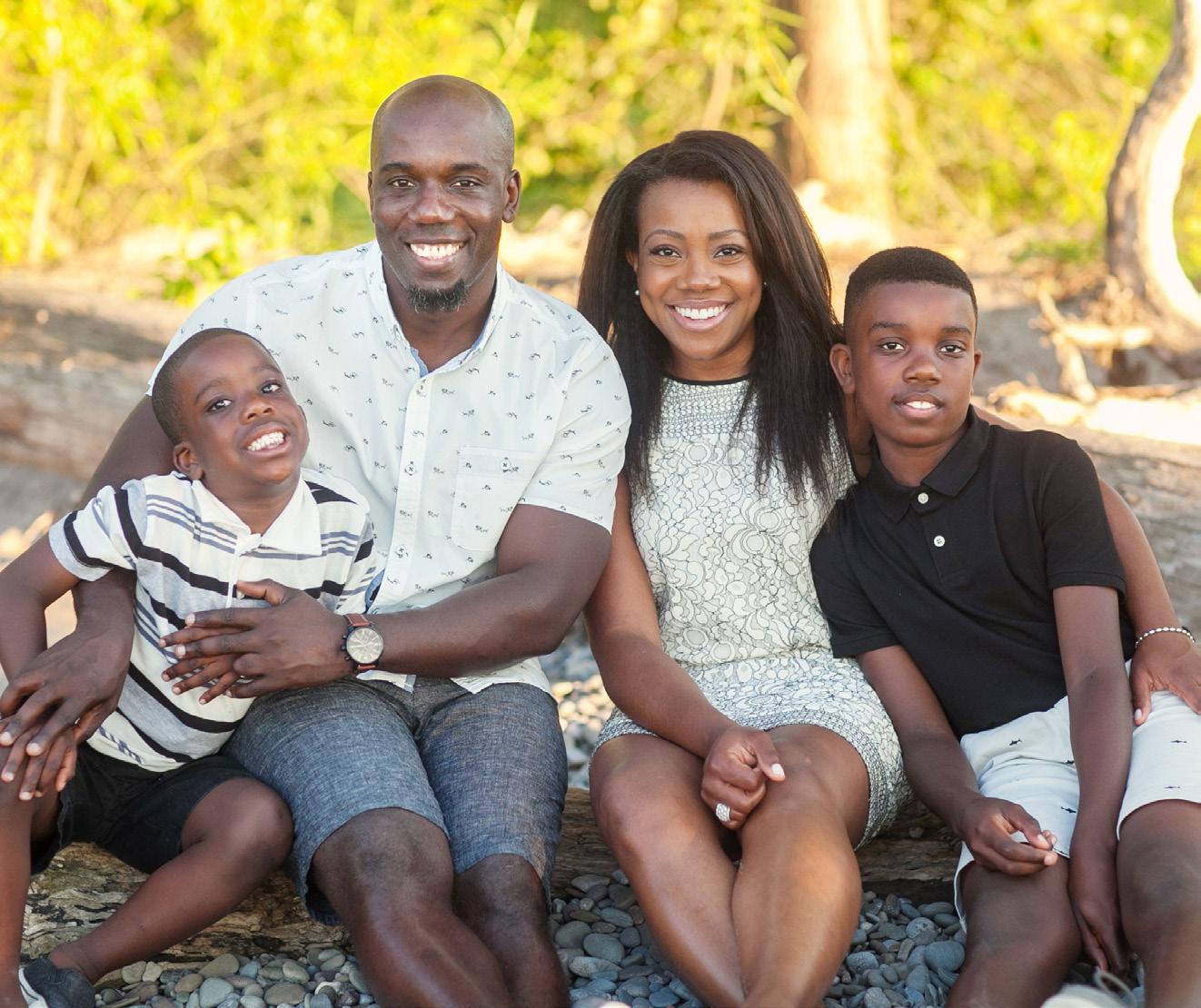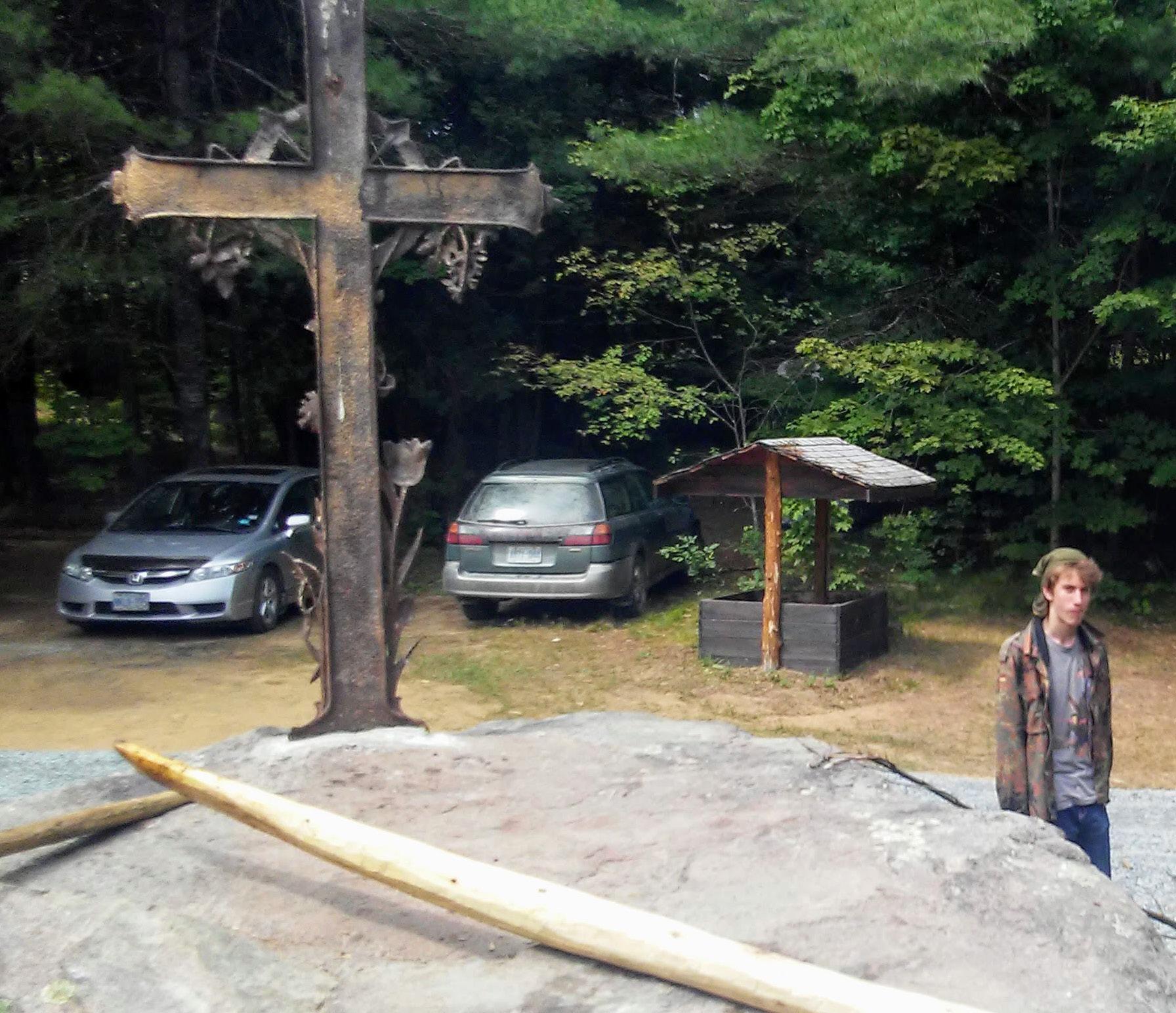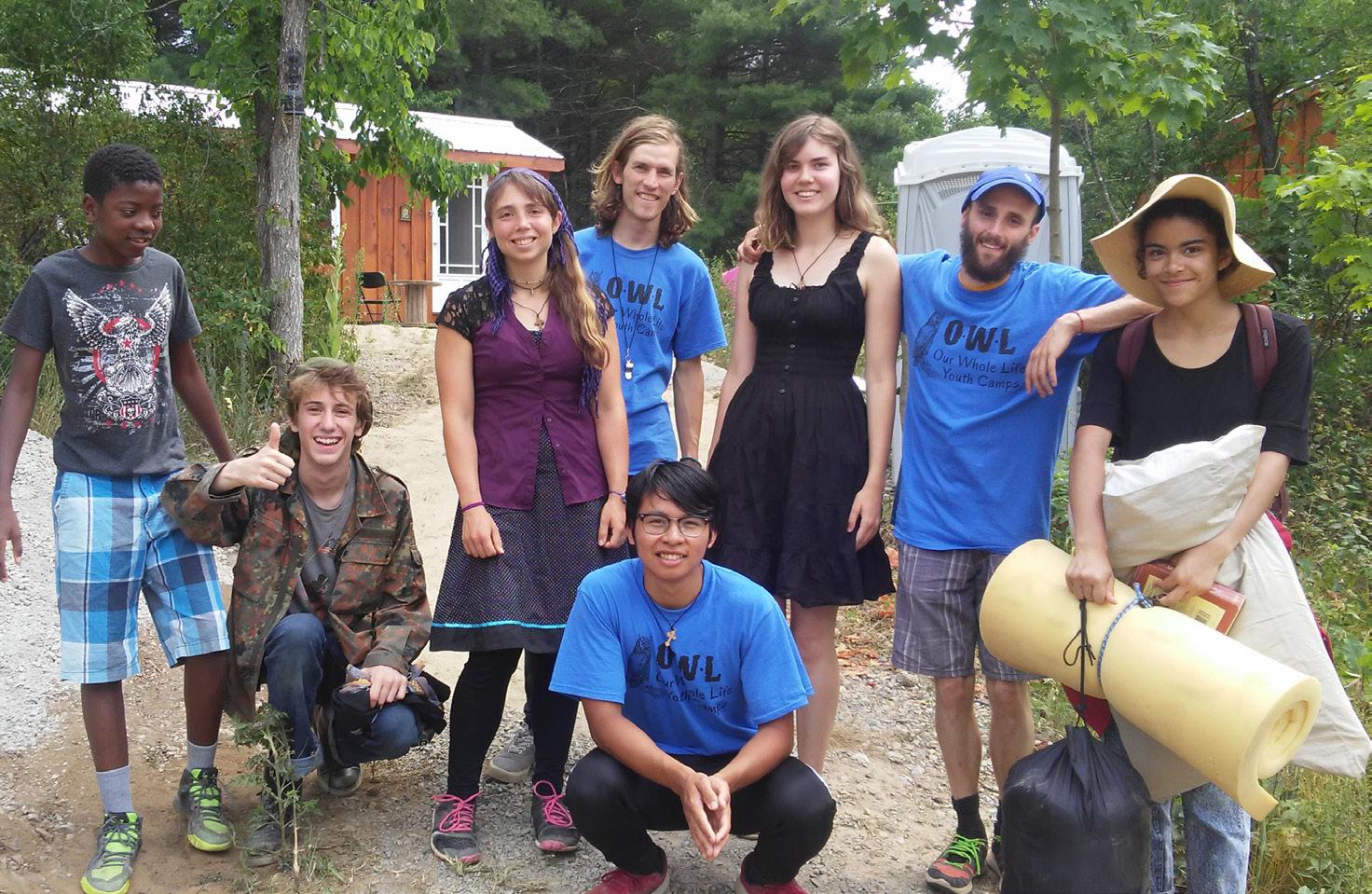
19 minute read
When Addiction Takes Over
The Salvation Army helped Greg take back his life from drug use and violence.
by Linda Leigh
At an early age, Greg’s rage was explosive. A child unable to cope with his emotions, he turned to drugs. But after 20 years of drug abuse and criminal activity, he successfully beat his addiction with the help of The Salvation Army.
A Life Behind Bars “There was a lot of anger at home and that hurt,” says Greg, 37. “I had emotions I didn’t know how to deal with, and I was fiery and impulsive.”
Greg’s drug use began at 13.
“My addiction started based on peer pressure,” he says. “Then it helped me deal with the negativity at home. I thought, If marijuana couldn’t make me feel better, what else could?”
As Greg’s drug use escalated, so did his criminal activity.
“Robbery, violent crimes … I hurt a lot of people,” he says. “I spent half of my life in prison.”
A Second Chance When Greg was tired of his lifestyle and burnt out, he turned to The Salvation Army’s Centre of Hope in Calgary for help. There, a live-in recovery program for adult men offers treatment that includes individual and group counselling, life-skills training and after-care support so that individuals not only live substance-free but thrive.
“The Salvation Army helped me get healthy and changed the direction of my life,” says Greg. “I completed the drug-treatment program, I’m clean, and I’m working and rebuilding broken relationships. I look at The Salvation Army as a blessing and a gift. They gave me a second chance at life. Without them, I wouldn’t be alive today.”
Band of Brothers “The Army changed my life,” says Greg (right), here with Mike Forsey, then the community services’ assistant executive director

Taking the Stand
GETTING TO THE TRUTH ABOUT JESUS’ RESURRECTION. by David Jeffrey
Who is the most successful trial attorney in the world?
According to the Guinness Book of World Records, the answer is Sir Lionel Luckhoo, who succeeded in getting his 245th consecutive murder acquittal by January 1, 1985. He was called the real-life Perry Mason. What skills accounted for such

courtroom success?
With his tremendous analytical skills, he could consider an airtight prosecution case and spot the flaws. He was an expert as to what constitutes reliable, admissible and persuasive evidence.
So how would Sir Lionel have viewed the evidence for the Resurrection of Jesus Christ?
Well, he took his expertise in law and actually questioned whether it stood up to the tests of legal evidence.
“I say unequivocally that the evidence for the Resurrection of Jesus is so overwhelming,” he concluded, “it compels acceptance by proof that leaves absolutely no room for doubt.”
Sir Lionel then decided to do the most logical thing in the world. He became a Christian.
Ecce Homo (Here is the Man) by Antonio Ciseri (1821-91). The title of the painting refers to the Latin words used by Pontius Pilate when he presented Jesus to the hostile crowd shortly before His Crucifixion (see John 19:5)
Death by Flogging The Apostle Paul writes, “And if Christ has not been raised, your faith is futile; you are still in your sins” (1 Corinthians 15:17).
What he is saying is if this is make-believe, if this is legend, faith is worthless. The Resurrection of Jesus is the linchpin of Christianity.
Some people take the position that Jesus never really died on the cross. The “swoon theory” says that Jesus either fainted on the cross or took some sort of a drug to make it appear as if He had died. When He was taken to the tomb, cool air revived Him and He emerged alive.
The Bible states that after Jesus was put on trial by Pontius Pilate, who was the Roman official in charge of the province of Judea, “Then Pilate took Jesus and had Him flogged” (John 19:1).
Medical expert C. Truman Davis studied what was involved with flogging. He concluded that it was a very brutal beating that left Jesus at the very edge of death. Many who were sentenced to death by crucifixion
never made it to the cross alive due to this beating.
Death by Crucifixion Crucifixion caused a slow death by suffocation. If the Romans wanted to hasten death, they would shatter the victim’s shins with a mallet. They did this to the criminals who were crucified with Jesus, but they didn’t do that to Jesus because it was
clear that He was already dead.
“Instead,” as John, one of Jesus’ closest disciples and an eyewitness to the crucifixion, reported, “one of the soldiers pierced Jesus’ side with a spear, bringing a sudden flow of blood and water” (John 19:34).
Nobody left the Roman cross alive. That included Jesus.
An authoritative article in the prestigious Journal of the American Medical Society concluded, “Clearly the weight of the historical and medical evidence is that Jesus was dead before the wound to His side was inflicted and supports the traditional view that the spear probably perforated not only the right lung but also the pericardium and heart and thereby ensured His death. Accordingly, interpretations based upon the assumption that Jesus did not die on the cross appear to be at odds with modern medical knowledge.”
Now, let’s consider the affirmative evidence for the Resurrection of Jesus.
COMMISSIONER DAVID JEFFREY
Truth or Mythology? The accounts of Jesus being the Son of God began very early, before any mythology could have contaminated the accounts.
Studies of the rate at which legends accrued in the ancient world tell us it takes a minimum of two generations for mythology to corrupt a solid core of historical fact. The creed recited by the early church said, “Jesus died for our sins according to the Scriptures. He was buried and He was raised on the third day according to the Scriptures.”
This creed dates back to as early
as 23 to 36 months after Jesus was crucified. This contradicts the assertion that the Resurrection was a product of mythology about the life of Jesus.
The Logical Thing His tomb was empty, and no one to this day has uncovered the body of Jesus. History tells us that His body was laid to rest in a tomb belonging to Joseph of Arimathea, a prominent member of the Jewish council. An extremely heavy boulder was rolled in front of it with the seal of Rome placed on it, then guarded by elite Roman soldiers. Yet it was discovered empty on Easter morning.
So here is the single most important fact about the tomb of Jesus: No one ever claimed that it was anything but empty. Even His opponents admitted His tomb was empty. They bribed the guards to say, “The disciples stole the body while they were asleep.”
During the 40 days after His Resurrection, Jesus appeared a dozen times to more than 500 different individuals. He appeared to men and women. He appeared to believers and skeptics. He appeared to both tough-minded and tender-hearted people. He appeared sometimes to individuals, sometimes to small groups and sometimes to large groups. He talked with people. He ate with people.
Jesus told the truth when He said, “I am the Resurrection and the life. The one who believes in Me will live, even though they die” (John 11:25).
Why did He endure the cross, the beating, the humiliation? It was out of His love for us.
When we accept what Jesus did on the cross, when we accept Jesus as the forgiver of sin, we can have confidence that we, too, like Jesus, will someday overcome the grave and spend eternity with Jesus in heaven.
So, this Easter, let’s do what Sir Lionel did. Check out the evidence for ourselves. Investigate it. Make up our minds to explore the claims about this most wonderful truth.
Then, perhaps, like Sir Lionel did, we will also decide to do the most logical thing in the world.
Reprinted from The War Cry (United States), Easter 2014
(left) Commissioner David Jeffrey was the national commander of The Salvation Army in the United States.
Hot Topics With the help of her Context team, Maggie John tackles issues, such as the opioid crisis, medical assistance in dying and race

Anchoring Her Faith

TV HOST MAGGIE JOHN IS PASSIONATE ABOUT FINDING GOD’S STORY IN THE HEADLINES. by Helena Smrcek
Photos: Moussa Faddoul
No. 1 Responsibility Maggie, here with her husband, Elton, and their children, from left, Joshua and Ethan
MAGGIE JOHN BROKE INTO
Christian media as an intern reporting for Listen Up TV from New York City on 9/11. She remembers the response of The Salvation Army at Ground Zero.
“Handing out water and Bibles, they were the embodiment of the church in action,” she recalls.
Now, the first Black female host of 100 Huntley Street steps into her new role anchoring Context: Behind the Headlines, the same program she interned for 19 years ago.
“Never did I think I’d be sitting where I am today.”
Fighting Stereotypes If there is one hallmark of Maggie’s career, it’s action. “She’s a powerhouse media professional, passionate about finding the God story in the headlines,” says Cheryl Weber, 100 Huntley Street host and international producer for Crossroads Cares. “She curates important conversations with intelligence and compassion.”
Born in Toronto’s St. Joseph’s Hospital to first-generation immigrants from Trinidad and Jamaica, Maggie grew up in one of the city’s housing projects. Rising from field reporter to producer to on-air talent, Maggie recently achieved another major milestone.
“I’m honoured that I was chosen to be the anchor of Context, and Lorna Dueck (retired CEO of Crossroads, founder of Context) has given me her blessing. It is very important to me.”
Throughout her trail-blazing career, Maggie overcame many hurdles. No stranger to racist comments, such as being addressed as “the coloured girl” or “that lovely Black girl,” she fights against the stereotypes of our culture and persists with strong faith and excellence.
Give-and-Take “Maggie broke ground in Canadian Christian media with her comprehensive special broadcast on The Year of The Gun, when 52 people were killed in Toronto in 2005. But the demands on her journey never compromised her No. 1 responsibility of placing her family first,” says her former boss, retired executive producer George McEachern.
A mother of Ethan and Joshua,

Photo: Pete Stec
wife to Elton, Maggie takes her family life very seriously.
“I couldn’t do this without Elton’s support,” she says, “but he’s also my critic, and I look for his feedback after the show.”
Their marriage is a balance of give-and-take. “God has brought us to a great place where we encourage, but also allow each other to be who God wants us to be.”
Maggie’s schedule requires her to travel extensively, and the pandemic of 2020 brought many additional challenges, including shutdowns, school closures and mass protests. Hard Conversations With the help of her passionate and diverse team at Context, Maggie tackles various hot issues, such as the opioid crisis, medical assistance in dying and race. “Every day as I swipe my ID card and enter the building I work in, I carry more than just myself through those doors. I carry perceptions of my culture, past experiences of people’s interactions with my people and the responsibility of undoing negative stereotypes propelled by pop culture.”
Maggie sees Context as having a unique opportunity to challenge the

doors.” MAGGIE JOHN
church.
“God wants us to stand up for the oppressed,” she believes. “We’re so bogged down by politics. There’s so much division. People forget Jesus is at the centre of all this. I’m speaking specifically to Christians because there’s a higher expectation put on us as followers of Christ. Being a part of a church community means not to be afraid to enter into hard conversations, to have an open mind, to listen to your brothers and sisters.”
“Our Own Right” Maggie takes an active role in her efforts to bring about change. She serves as chair of the board at The Meeting House church, is a founder of the Baby Depot ministry, which helps fight child poverty in Hamilton, Ont., and is an active board member of GEMS Girls’ Club, a non-denominational, non-profit, Christian organization.
“Growing up in the 2020s is challenging,” she says. “Girls have always been told who they should be and how to act, but they need to centre their identity on Jesus.”
Maggie often challenges women to talk about those same issues.
“We’re God’s daughters, but so
often get mired by taking care of everybody else and forget that God has created us with unique talents. He called us in our own right.”
A Better Place What drives her today is the continuation of her grandparents’ legacy, who lived in a small village in Jamaica. At her grandmother’s funeral, Maggie found out about a scholarship her grandparents awarded to young people in their village so they could go to university.
“They saw past their own 13 children,” says Maggie. “I started to cry, not only over my grandmother but also over this lesson the Holy Spirit was teaching me, about the privilege that we’re given, not to hoard, but to give it away.”
Maggie envisions leaving a better place, not only for her children and grandchildren but also for others, for those who are watching, especially for those who feel they have no future.
“I started my first season of Context outside the Toronto housing project where I grew up. It took somebody to open the door for me so that I can open the door for somebody else, somebody who may be in the Toronto housing, thinking, There is no way that I can be on TV, sit on a board or be a leader in my community.”
Maggie is showing others that they, too, can have a voice.
Christian Media 101
Crossroads Christian Communications Inc. is Canada’s leader in providing faith and values media content for people of all ages, supplying a relevant message of faith for millions of Canadians for more than 50 years. 100 Huntley Street, the flagship television program of Crossroads, was founded by Rev. David Mainse and is the longest-running daily television program in Canada. Context: Beyond the Headlines (originally aired as Listen Up TV) is a weekly national television program and digital content producer, whose mission is to create boundary-breaking media that reveals Jesus. The show explores news and current affairs with Christian analysis by looking into stories and issues that affect Canadian lives.
My Son’s Refuge
God’s Presence Max Venner entering the Refuge
Photos: Jennifer Venner

IN A SERENE FOREST EAST OF THE HUSTLE AND BUSTLE OF TORONTO, GOD’S PRESENCE SHINES THROUGH. by Jennifer Venner
In the swampy, rocky environs of eastern Ontario near Belleville, there is a place that calls itself “the Refuge,” a Christian community that hosts summer camps and retreats. It covers several square kilometres, but most of the area remains a wilderness, with only rudimentary trails piercing the silent forest.
My children, Sophie and Max, attended camp at the Refuge
starting in the mid 2000s, meeting new kids and doing the usual camp activities: canoeing, hiking, arts and crafts. The main building is the only one with electricity, where the cook prepares meals and the counsellors live. There’s no Wi-Fi, no TV, no reliable cellphone service. The kids sleep in dormstyle cabins near the chicken coop and the garden, where most of their vegetables come from. And there is a goat named Conseula. Happy Memories I had only been to the Refuge once, years ago, so when Max, now 15, invited me to a family retreat after the camps were finished, I eagerly accepted the offer. At home, my son was a bit of a loner who spent a lot of time listening to music on his iPhone, playing guitar in his room and brooding in that way so common to teenage boys. He was thoughtful and worked hard in
school but seemed disconnected and lonely, even in a room full of loved ones.
Max was excited about me coming to the Refuge with him. The summer before, he had loved it so much that he begged to stay an additional two weeks, and the Refuge staff kindly obliged. He told me about how he and his friends would sneak out late at night and gaze at the stars, astonished by their multitudes. The Toronto kids had never seen the Milky Way. For the camp

Oasis of Tranquility Only rudimentary trails pierce the silent forest surrounding the Refuge
sing-alongs around the fire, Max played guitar, something he was too shy to do in front of his family at home. He wanted me to see all the places where he’d formed memories.
Proud Mother We arrived and I remembered just what a special place the Refuge truly was. Nestled in the forest, it had mystery and an alert, benevolent presence, watching over us all. The Refuge has a small altar with a simple bench, on which to contemplate in silence, surrounded by nature.
We found the Refuge staff sharing a meal outdoors and a cake for someone’s birthday. Gathered in this commune from different parts of the world, they spoke Italian, English and Spanish at the table. They played music and danced and sang as the sun went down. Max watched, a big smile on his face. He felt at home there.
The next day, we helped set up for the retreat with the staff. The founder of the Refuge, Mary Marrocco, asked Max to give a speech at a ribbon-cutting ceremony for the new refectory, a large, barn-like building that would replace a former tent. I was certain Max would decline, but he gladly accepted. He didn’t write anything down. “I’ll just wing it,” he told me with a shrug and a smile. I could tell he was pleased to be asked.
Around 40 people arrived that day to witness the ceremony. Max’s speech was heartfelt and sincere. He talked about how he loved the Refuge and how much it meant to him. Grinning and warming up to his audience, he joked about the former refectory tent and how it leaked on the kids’ heads when it rained. He
Thumbs Up Max (second from left) with his friends on his last day at camp

went from being the guarded teen to a sincere, grateful young man who loved being part of something bigger than himself. Mary thanked him for braving an audience to share his experience. I was very proud of him.
God’s Presence We had to leave early the next morning, and I took Mary aside to thank her for the hospitality.
“This is such a beautiful place, so serene,” I said to her. “You can really feel God’s presence everywhere.”
Mary smiled and nodded. “It is a special place,” she concurred. “The world is changing, and we think it’s important that this generation understands that nature is our home. We are the stewards of God’s great creation.”
I agreed. “I have never seen Max so happy as when he is here. Back in Toronto, he can be a bit distant.”
We both watched Max helping to wash the dishes in an outdoor tub. He was laughing with his friends. “This is the way he always is, with us,” said Mary. “We love Max, and hope he keeps coming back.”
I hope he does, too.
I, Karly
Why did this volunteer collect 166 kilograms of food for her local Salvation Army?
by Melissa Yue Wallace

Photo: Jennifer Irmen
In her short time volunteering with The Salvation Army Salmon Arm Ministries in British Columbia, Grade 12 student Karly Irmen has already helped to clothe and feed hundreds of people in need.
This past December, the same month she began volunteering with the Army, she raised $175, collected 32 kilograms of food and some clothes at the local mall. The following month for her capstone graduation project, she held a food and clothing drive for the Army at her school. Through morning announcements, hallway TV ads and other promotions, this time, the community responded in a big way. Karly collected 134 kilograms of food and 17 large garbage bags of clothing.
“It was a lot of work, and I didn’t get much homework done,” she laughs. “But I’m still shocked.”
Deceptive Appearances Karly began serving at Salmon Arm Ministries because she required volunteer hours for scholarship applications. She thought of the Army because her family had previously donated to the Army’s food bank every week.
“I didn’t know a whole lot, but
Capstone Achievement Karly Irmen saw a need and did something about it
I knew enough of what happened there,” she says.
Her perspective soon changed once she became immersed in the work. “It’s been an eye-opener at times because I’ve seen some of the people around town and would have never suspected they would come in.
“They just look like regular people who had everything together.” phone with someone about her kids, and I could see that was hard,” she says. “She didn’t have to say much for me to pick up on that, but she was really thankful at the end of the tour.
“I hope that when people come, they can get what they need, feel safe to do so, and see some friendly, welcoming faces at the door.”
“There for Them” David Byers, community services director for the past 19 years, says that Salmon Arm Ministries lost
volunteers when the COVID-19 pandemic hit, but now has a solid and reliable group that is like a “big, happy family.”
“We couldn’t do any of this without volunteers such as Karly,” he says. “Some come every day, some come only for a couple of hours, but they just seem to all get along and it draws people in.
“There’s a diversity of need among the people who turn to The Salvation Army for help—and some don’t even know what they’re looking for. All we know is that they keep coming back, and if they need to talk and have someone listen, we are there for them.”
Welcoming Faces Salmon Arm Ministries offers a food bank, shelter and church, providing for more than 2,000 people a month through their grocery and hamper program.
Karly volunteers every second Wednesday for four-hour shifts. Her regular tasks include filling shelves and tables, and taking people through the food bank so they can select the items they need. She enjoys helping people in this way, as well as the opportunity to show kindness.
“The one individual I remember most was obviously having a hard day and had to stop and talk on the




